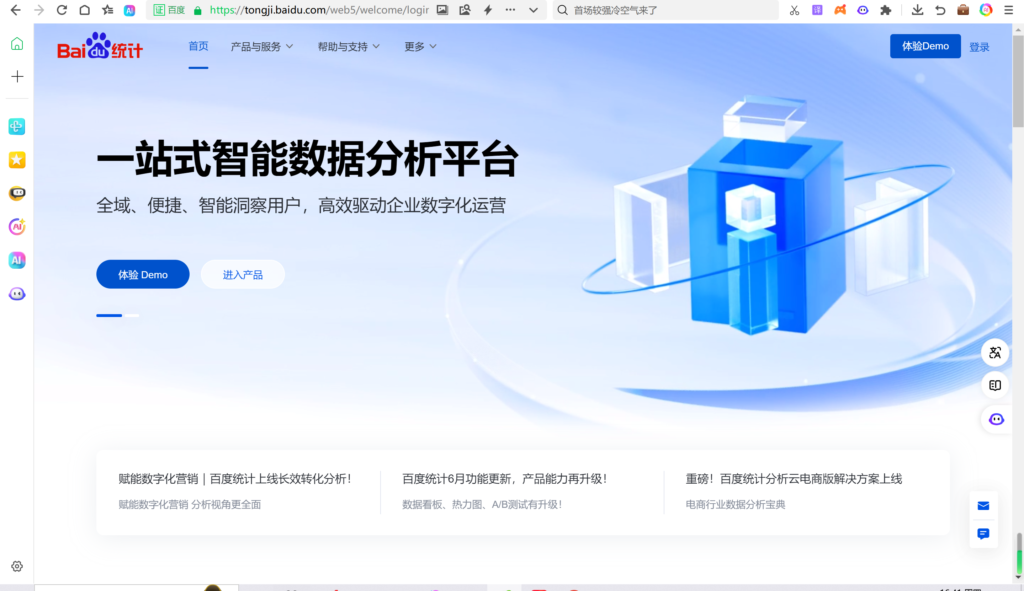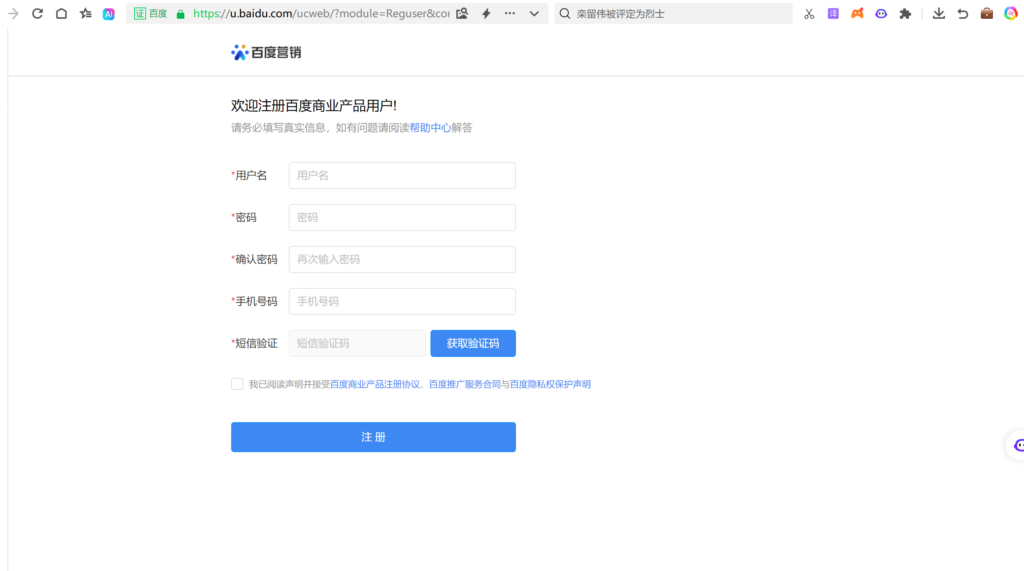In the ever-evolving landscape of digital marketing, it’s crucial for businesses to have a robust understanding of their online presence and performance. For overseas brands targeting the Chinese market, leveraging tools like Baidu Analytics becomes paramount, especially when engaging in Search Engine Marketing (SEM) and Search Engine Optimization (SEO) on Baidu, China’s leading search engine. This article aims to guide overseas brands on how to effectively utilize Baidu Analytics to enhance their marketing strategies and overcome the unique challenges of data tracking in a Chinese context.
The Introduction to Baidu Analytics
Baidu Analytics, akin to Google Analytics, is a comprehensive web analytics tool designed specifically for the Chinese market and Baidu search engine. It provides detailed insights into website traffic, visitor behavior, and conversion rates, enabling businesses to make data-driven decisions. However, for overseas brands, navigating the nuances of this platform can be daunting due to language barriers, cultural differences, and the specificity of Baidu’s search algorithms.
Despite these challenges, the benefits of using Baidu Analytics for SEM and SEO efforts on Baidu far outweigh the obstacles. By understanding key data dimensions and their implications, overseas brands can optimize their marketing campaigns, improve user experience, and ultimately drive more conversions.

Baidu Analytics Basics
Before diving into the specifics, let’s briefly overview Baidu Analytics’ core functionalities. The platform offers a range of features, including traffic analysis, source analysis, visitor analysis, and conversion analysis. Each feature provides valuable insights that help businesses understand their online performance and identify areas for improvement.
Unlike Google Analytics, Baidu Analytics is tailored to the Chinese market, offering localized features and insights that may not be readily available on other platforms. This makes it an essential tool for overseas brands looking to establish or expand their presence in China.
Registration and Setup
To get started, overseas brands can either register directly for a Baidu Analytics account, which is a relatively straightforward process but may require some assistance due to language barriers. Alternatively, overseas brands can work with a Baidu agency, such as Deep Digital China, to set up a Baidu Ads account, through which they can then directly access Baidu Analytics. Once registered, brands can easily add the tracking code to their website and begin collecting data.

Key Data Dimensions of Baidu Analytics for Overseas Brands
1. Traffic Analysis
Page Views (PV) and Unique Visitors (UV): These metrics indicate the overall popularity of a website. High PVs and UVs suggest a strong online presence, but it’s essential to monitor the ratio between them to identify potential issues, such as low engagement or high bounce rates.
Bounce Rate and Average Session Duration: Bounce rate measures the percentage of visitors who leave a website after viewing only one page. A high bounce rate could signify poor content quality, irrelevant targeting, or a challenging user experience. Average session duration, on the other hand, reflects how long visitors stay on the site, offering insights into engagement levels.
2. Source Analysis
Search Engine Traffic: Given the focus on SEM and SEO, understanding search engine traffic is crucial. Baidu Analytics allows users to analyze keywords, search rankings, and click-through rates, enabling them to optimize their content and ad campaigns for better visibility and conversions.
Direct and Referral Traffic: Analyzing direct and referral traffic can reveal the effectiveness of branding efforts and external partnerships. It’s essential to identify high-performing referral sources and explore opportunities for collaboration.
3. Visitor Analysis
Geographic Distribution: Understanding where visitors come from is vital for tailoring content and marketing messages to specific regions. Baidu Analytics provides detailed geographic data, enabling overseas brands to assess their market penetration and identify potential growth areas.
Device Types and Browsers: Knowing which devices and browsers visitors use can inform website design and optimization efforts. For example, if a significant portion of visitors access the site via mobile devices, it’s essential to ensure a seamless mobile experience.
4. Conversion Analysis
Conversion Goals and Funnel Analysis: Setting up conversion goals and analyzing the funnel can help identify bottlenecks in the conversion process. By understanding where visitors drop off, businesses can make targeted improvements to increase conversions.
Conversion Efficiency and Cost: Evaluating the efficiency and cost of conversions is crucial for measuring the ROI of SEM and SEO efforts. By comparing data across channels and campaigns, businesses can optimize their spend and allocate resources more effectively.

Understanding the Significance of Baidu Analytics Data
Each data dimension in Baidu Analytics holds immense value for overseas brands. Traffic trends reveal the overall health of a website and the effectiveness of marketing efforts. Keyword performance insights inform SEO and SEM strategies, while visitor analysis provides valuable insights into user preferences and behaviors. Finally, conversion analysis helps businesses assess the impact of their marketing investments and identify areas for optimization.
Considerations for Overseas Brands
When using Baidu Analytics, overseas brands should keep the following considerations in mind:
Language and Localization: Baidu Analytics is primarily available in Chinese, which can pose a challenge for non-native speakers. Consider using translation tools or consulting with local experts to ensure accurate interpretation of data and insights.
Data Privacy and Compliance: Ensure compliance with Chinese and international data protection regulations when collecting and processing user data. This includes obtaining proper consent, implementing robust security measures, and respecting user privacy rights.
Continuous Monitoring and Optimization: SEO and SEM are ongoing processes that require regular monitoring and adjustments. By continuously analyzing data and adjusting strategies, overseas brands can stay ahead of the competition and maximize their online presence in China.

Practical Case Analysis
Case Study 1: E-commerce Website Traffic Optimization
A renowned e-commerce website leveraged Baidu Analytics to conduct a comprehensive analysis of its website traffic. By monitoring key metrics such as user behavior paths, page dwell time, and bounce rates, the team discovered that the product detail pages had slow loading speeds, resulting in degraded user experience and subsequently affecting conversion rates. To address this issue, the website team optimized image compression algorithms and server configurations, significantly enhancing page loading speeds. After implementation, not only did user satisfaction improve, but conversion rates also increased by 15%, directly driving an increase in sales.
Case Study 2: Content Marketing Effectiveness Evaluation
A media company utilized Baidu Analytics to track the dissemination effects of its articles on social media. By analyzing data such as the number of shares, click sources, and user demographics, the company was able to precisely identify which types of content resonated most with readers. Based on this insight, the company adjusted its content creation strategy, increasing the production of content that aligned with reader interests, effectively enhancing user engagement and brand exposure.
2. Common Issues and Solutions
Issue 1: Inaccurate Data
Solution: Firstly, check that the Baidu Analytics code is correctly installed on the website and ensure there are no duplicate installations or omissions. Secondly, regularly clean up invalid or erroneous tracking codes to prevent data contamination. Additionally, utilize Baidu Analytics’ “Data Validation” feature for self-checks to ensure data accuracy. If the issue persists, contact Baidu Analytics customer service for assistance.
Issue 2: Ineffective User Behavior Analysis
Solution: Deepen understanding of Baidu Analytics’ capabilities, particularly advanced functions like event tracking and custom variables. By appropriately setting up event tracking, accurately capture key user behaviors such as button clicks and form submissions. Furthermore, utilize custom variables to tag different user groups for subsequent data analysis and segmentation. Additionally, integrate other analysis tools (e.g., user surveys, A/B testing) for comprehensive analysis to obtain a more holistic picture of user behavior.
Issue 3: Difficulty Interpreting Data
Solution: Strengthen data analysis skills by learning basic statistical knowledge and data analysis methods. Leverage Baidu Analytics’ visual reports and custom dashboards to transform complex data into intuitive charts and trend lines. Regularly hold data analysis meetings to invite team members to discuss the meaning behind the data, fostering a heightened sensitivity and interpretation ability among the team.

Conclusion
In conclusion, Baidu Analytics is a powerful tool for overseas brands looking to optimize their SEM and SEO efforts on Baidu. By understanding key data dimensions and their implications, businesses can gain valuable insights into their online performance and make data-driven decisions to improve their marketing campaigns. While navigating the platform may present challenges, the benefits of using Baidu Analytics far outweigh the obstacles. By embracing these tools and staying committed to continuous improvement, overseas brands can establish a strong presence in the Chinese market and drive long-term growth.
